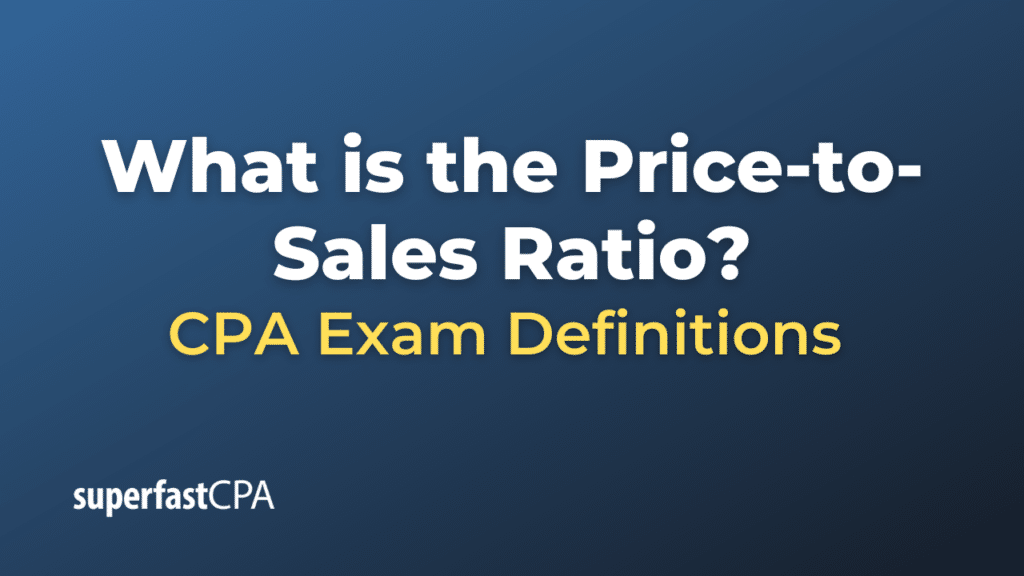Price-to-Sales Ratio
The Price-to-Sales (P/S) ratio is a valuation ratio that compares a company’s market capitalization (or stock price) to its annual sales revenue. It is often used by investors to determine the relative value of a company’s stock based on its sales performance.
The P/S ratio is calculated as follows:
Price-to-Sales Ratio = Market Capitalization / Total Sales Revenue
Alternatively, it can also be calculated on a per-share basis as:
Price-to-Sales Ratio = Market Price per Share / Sales Revenue per Share
The P/S ratio indicates how much investors are willing to pay for each dollar of a company’s sales. A high P/S ratio could suggest that the stock is overvalued, while a low P/S ratio could suggest that the stock is undervalued.
However, like all financial ratios, the P/S ratio should be used in conjunction with other metrics and not as a standalone measure of a company’s value. It is most useful when comparing companies within the same industry, as different industries have different profit margins and growth rates.
One advantage of the P/S ratio is that it is based on sales, which are generally less subject to manipulation than other financial metrics such as earnings. However, the ratio does not take into account profitability, so a company with high sales but low profits could still have a high P/S ratio.
Example of the Price-to-Sales Ratio
Let’s say we have two tech companies: Company A and Company B.
Company A’s market price per share is $100, and it has sales revenue per share of $20. Therefore, its P/S ratio would be:
P/S ratio = Market Price per Share / Sales Revenue per Share
P/S ratio = $100 / $20 = 5
This means that investors are willing to pay $5 for every $1 of Company A’s sales.
Now let’s look at Company B. Suppose its market price per share is $50, and it has sales revenue per share of $10. Therefore, its P/S ratio would be:
P/S ratio = Market Price per Share / Sales Revenue per Share
P/S ratio = $50 / $10 = 5
Interestingly, both companies have the same P/S ratio in this example. This indicates that the market values every $1 of sales of both companies equally, despite the difference in their stock prices.
Remember, it’s important to consider other financial ratios and company fundamentals when evaluating companies. A low P/S ratio may not necessarily mean a company is undervalued if, for example, the company is unprofitable. Similarly, a high P/S ratio doesn’t always mean a company is overvalued, especially if the company’s sales are expected to grow rapidly in the future.













